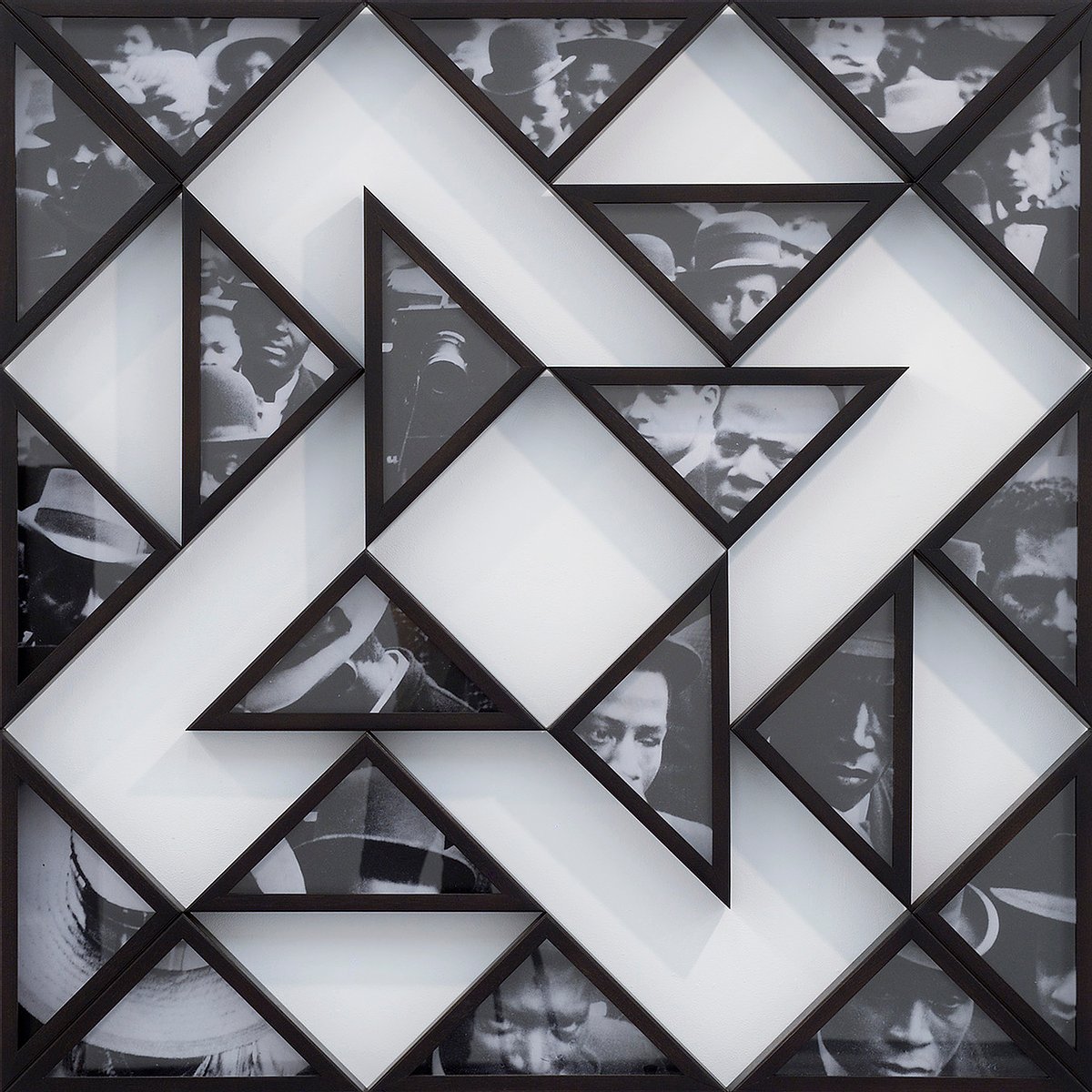The William B. and Isabel R. McCarty Foundation
Icons of the Permanent Collection Gallery
As a conceptual artist, Hank Willis Thomas incorporates found photographs, text, and materials ranging from sports jerseys to repurposed prison inmate uniforms into his artwork. Thomas’ art comments on contemporary identity and the history of how images make meaning. By isolating and drawing attention to recognizable images or objects from everyday life, much of his work exposes stereotypes of African Americans perpetuated by the popular media.
Beginning in 2012, Thomas began incorporating historic photographs by African American photographers into dynamic quilt-like pieces. These works reflect upon the history of racial representation and perspectives that are re-framed through memories and personal histories. Shown here, Flying Geese points to the visual legacy of African American migration and movement as well as the early 20th c. African American leaders who promoted civil rights and upward mobility.
Constructed from a single, enlarged photograph and encased in African mahogany, Flying Geese reveals pieces of an archival 1910 photograph by New Orleans-based photographer Arthur P. Bedou. Thomas edited out segments to create the dynamic “flying geese” quilt pattern, leaving intentional blank spaces that draw attention to the gaps in our memories and histories. A camera points back at the viewer— and presumably towards Bedou himself—as we consider Thomas’ reframing of this scene.
Bedou’s original photograph most likely shows a gathering before the great author and orator Booker T. Washington. His rousing speeches on social and educational advancement for African Americans inspired many from that generation to focus on economic prosperity within their own communities, though millions chose to leave the South to seek better opportunities outside the grips of white supremacy. Washington was criticized for not being more activist in his approach to opposing segregation (most notably by W.E.B. DuBois), and his legacy is debated to this day. Thomas’ choice to emphasize Bedou’s image of the crowds focuses a contemporary eye on ways in which freedom is understood and invites the viewer to reconsider a moment from over a hundred years ago through a present-day lens.
“The common denominator in my work is framing and context. Whoever is holding the frame gets to create the context—for history, for the way we see ourselves, for the way we see the world, for the way we see others.” – Hank Willis Thomas, 2016

